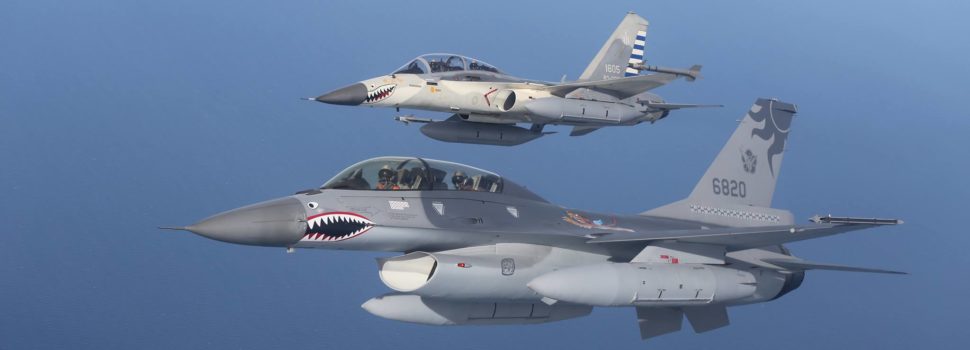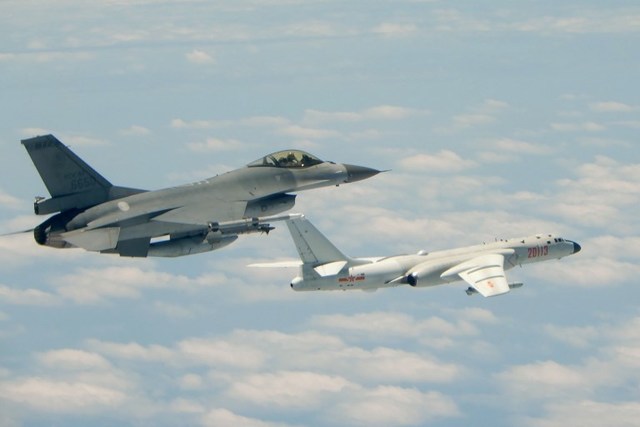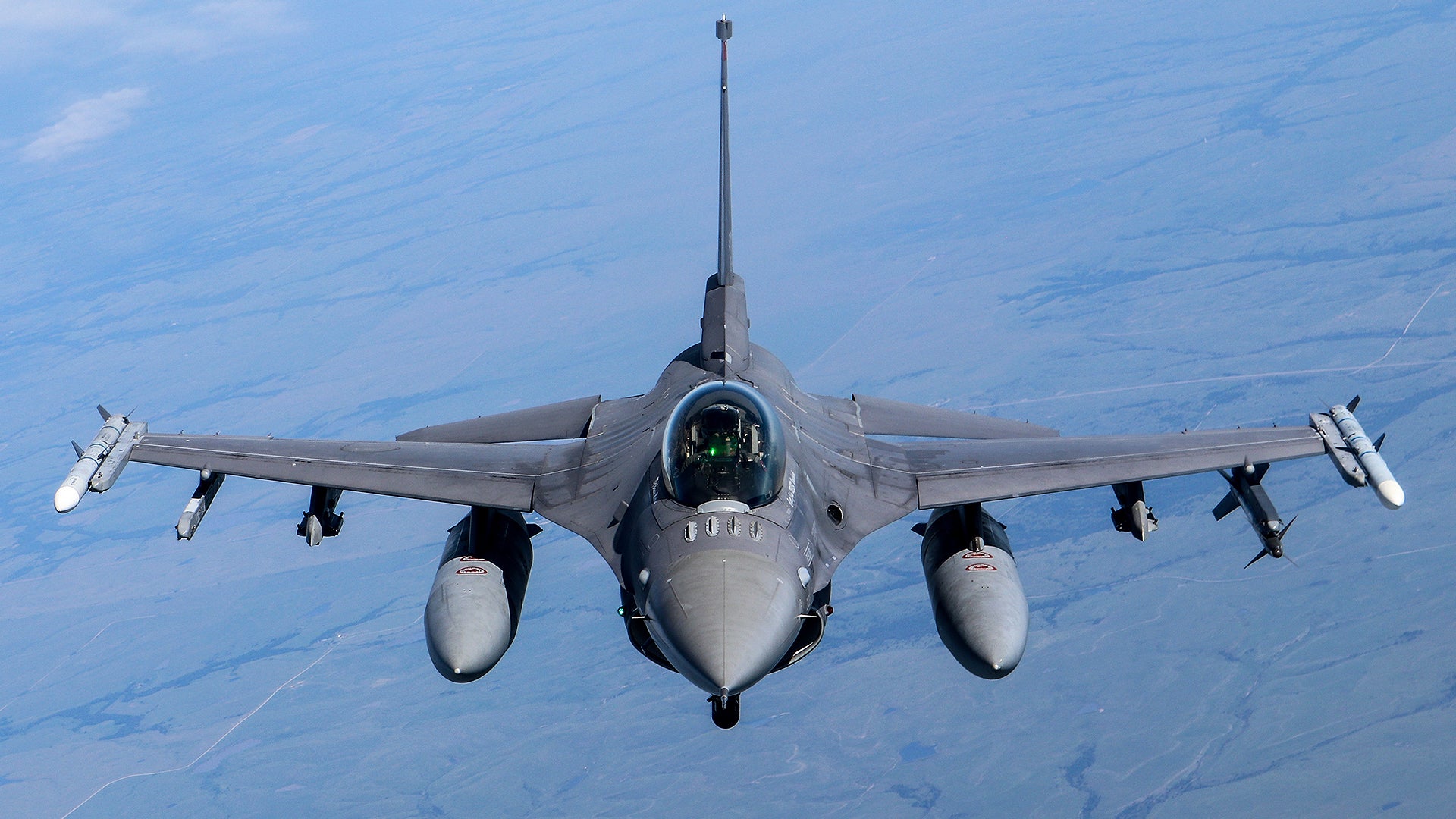The Trump Administration has officially sent an $8B deal to supply Taiwan with advanced Block 70 F-16s to Congress. The potential sale is something we have tracked very closely over the last year as it is sure to infuriate China who has made it clear that such a deal would be crossing an unprecedented “red line.” Of course, all this comes during a brutal trade war between the U.S. and China that is beginning to spill more heavily into other geopolitical arenas—a possibility that has been a major concern of some analysts who fear it could eventually lead to a military standoff or even an armed conflict. You can read all about these tertiary issues related to the deal in our most recent piece on it linked here. Regardless, here is what Taiwan would be getting for $8B if the sale moves ahead.
The deal would primarily include 66 new-build Block 70 F-16C/D Vipers. Here are some of the highlights from the detailed list provided by the State Department:
- Nine spare General Electric F110 engine—Interesting that Taiwan is choosing GE F110 engines over Pratt and Whitney F100s. Their current fleet of F-16A/B/V aircraft use P&W F100s like all F-16A/Bs.
- 75 AN/APG-83 Scalable Agile Beam AESA radars
- 120 ALE-50 towed decoys
- 75 AN/ALQ-211 A(V)4 Airborne Integrated Defense Electronic Warfare Suites
- 27 JHMCS II or Scorpion Helmet Mounted displays with night vision compatibility—Odd just 27, but they are probably already getting units for their upgraded F-16Vs
- 70 Night Vision Devices [goggles]
- 20 ground debriefing stations

In addition to this gear, there are varied small lots of fuzes and components for JDAMs and laser JDAMs, and a small number of actual JDAM kits are included, too. These are likely to be used for testing purposes. The rest is pretty much everything you would need to operate new F-16s, from training, to spares, to support, to expendables, such as chaff, flares, and 20mm ammunition. One major thing missing is a targeting pod. This and a large order of precision-guided munitions and missiles will probably be included in a separate deal or they will be shared with the deal already in place for the F-16V upgrade that includes 144 F-16A/Bs already in Taiwan’s inventory.
Here is the complete list from the State Department:
The State Department has made a determination approving a possible Foreign Military Sale to TECRO for the 66 F-16C/D Block 70 aircraft and related equipment and support for an estimated cost of $8 billion. The Defense Security Cooperation Agency delivered the required certification notifying Congress of this possible sale today.
TECRO has requested to purchase sixty-six (66) F-16C/D Block 70 aircraft; seventy-five (75) F110 General Electric Engines (includes 9 spares); seventy-five (75) Link-16 Systems (includes 9 spares); seventy-five (75) Improved Programmable Display Generators (iPDG) (includes 9 spares); seventy-five (75) APG-83 Active Electronically Scanned Array (AESA) Radars (includes 9 spares); seventy-five (75) Modular Mission Computers 7000AH (includes 9 spares); seventy-five (75) LN-260 Embedded GPS/INS (includes 9 spares); seventy-five (75) M61 Vulcan 20mm Guns (includes 9 spares); one-hundred thirty-eight (138) LAU-129 Multipurpose Launchers; six (6) FMU-139D/B Fuze for Guided Bombs; six (6) FMU-139D/B Inert Fuze for Guided Bombs; six (6) FMU 152 Fuze for Guided Bombs: six (6) MK-82 Filled Inert Bombs for Guided Bombs; and three (3) KMU-572 Joint Direct Attack Munition (JDAM) Tail Kits, GBU-38/54. Also included are seventy-five (75) AN/ALE-47 Countermeasure Dispensers (includes 9 spares); one-hundred twenty (120) ALE-50 towed decoy or equivalent; seventy-five (75) APX-126 Advanced Identification Friend or Foe (includes 9 spares); seventy five (75) AN/ALQ-211 A(V)4 Airborne Integrated Defensive Electronic Warfare Suite (AIDEWS) or equivalent (includes 9 spares); EW Line Replaceable Unit (LRU) and Standard Electronic Module (SEM) spares; one hundred fifty (150) ARC-238 radios (includes 18 spares); Secure Communications and Cryptographic Appliques including seventy-three (73) KIV-78 cryptographic COMSEC devices, and ten (10) AN/PYQ-10 Simple Key Loaders (SKLs) for COMSEC; three (3) Joint Mission Planning Systems (JMPS); twenty-seven (27) Joint Helmet Mounted Cueing Systems (JHMCS) II with Night Vision Device (NVD) compatibility or Scorpion Hybrid Optical-based Inertial Tracker (HOblT) helmet mounted cueing system with NVD compatibility; seventy (70) NVDs; six (6) NVD spare image intensifier tubes; Cartridge Actuated Devices/Propellant Actuated Devices (CAD/PAD); cartridges; chaff; flares; three (3) each DSU-38A/B Precision Laser Guidance Sensor (PLGS) for GBU-54 Laser Joint Direct Attack Munition (LJDAM) integration; PGU-28A/B 20mm ammunition; telemetry units for integration and test; bomb components; twenty (20) ground debriefing stations; Electronic Combat International Security Assistance Program (ECISAP) support including EW database and Mission Data File (MDF) development (classified/unclassified); communications equipment; classified/unclassified spares, repair, support equipment, test equipment, software delivery/support, personnel training, training equipment, flight/tactics manuals, publications and technical documentation; bomb racks; Organizational, Intermediate and Depot level tooling; Pilot Life Support Equipment (PLSE); Alternate Mission Equipment (AME); ground training devices (including flight and maintenance simulators); containers; development, integration, test and engineering, technical and logistical support of munitions; aircraft ferry; studies and surveys; construction services; U.S. Government and contractor engineering, technical and logistical support services; and other related elements of logistics, program and sustainment support.
The total estimated program cost is $8 billion.

A quote from Secretary of State Mike Pompeo about the sale was pulled from a Fox News interview and distributed by the State Department. It reads:
“The President approved the notice that went up to Capitol Hill on Thursday or Friday of last week so that we could move forward with these F-16 sales. These are deeply consistent with the arrangements, the historical relationship between the United States and China, the three communiques that layer on top of that. Our actions are consistent with past U.S. policy. We are simply following through on the commitments we’ve made to all of the parties.”
The official release also included the following talking points:
- U.S. security cooperation with Taiwan has ensured and will promote peace and stability across the Taiwan Strait and the region.
- Today’s notification is consistent with the Taiwan Relations Act, and our support for Taiwan’s ability to maintain a sufficient self-defense capability.
- There is no change to our longstanding U.S. “one China” policy based on the Three Joint Communiques and the Taiwan Relations Act.
Statements matter next to nothing in this instance—China is going to be absolutely livid about the deal moving forward and it will be a direct challenge to their own reported ‘red line’ regarding the issue. Certainly, some will see this as leverage, or at least punishment, towards China for not acquiescing to the trade demands of the Trump Administration. While that may or may not be true, now that the deal is officially moving forward, it will be hard to step away from it in the future.

Just yesterday, Chinese Foreign Ministry spokesman Geng Shuang warned the U.S. against supplying advanced F-16s to Taiwan:
“China has made numerous solemn representations to the US on the sale of F-16V jets to Taiwan… The US has to bear all the consequences triggered by the sale… China will take necessary measures to defend its self-interest based on the development of the situation.”
It will be very interesting to see how China responds to this. This deal represents a massive boost to Taiwan’s air combat capabilities, which are already being significantly enhanced by the F-16V upgrade program for their existing Vipers. It should also allow Taiwan to retire some older fighters in the future, such as its Mirage 2000s.
Yet above all else, if this deal is realized, it will be a huge victory for Taipei, which has been trying to get approval to purchase new-build advanced F-16s for many, many years.
UPDATE:
China has issued its first response to news of the deal moving forward, stating that it will sanction companies involved with the agreement. Chinese Foreign Ministry spokesman Geng Shuang stated the following:
China will take all necessary measures to defend its own interests, including imposing sanctions on the U.S. companies involved in the arm sales… They constitute severe interference in China’s internal affairs and undermine China’s sovereignty and security interests.”
This is likely just the start of China’s response. We will keep you updated as we find out more.
Contact the author: Tyler@thedrive.com
